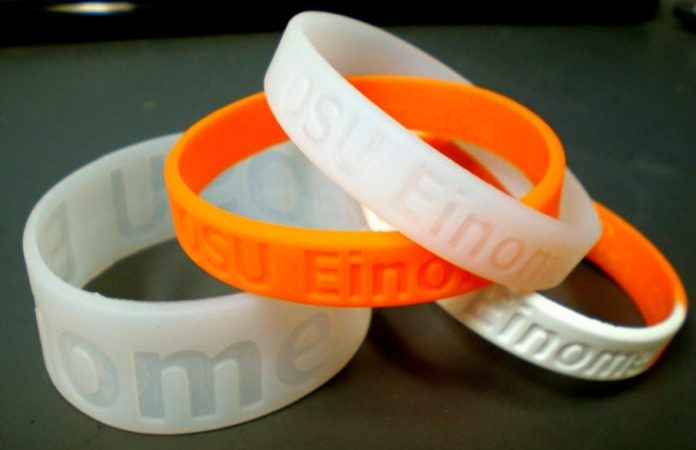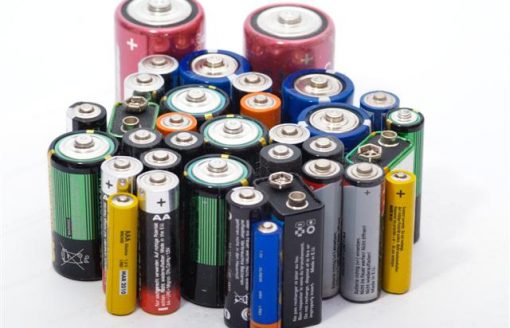Before air-monitoring systems existed, canaries were used to keep those charged with digging deep below safe.
If the canary suddenly dropped dead, the miners harvesting coal from the Earth’s crust knew they were next, and would make a dash for the top of the mine.
Of course, the miners had already been exposed to whatever toxins killed the bird, and had mere minutes to escape before falling victim to the same toxins.
We have come a long way from using birds to tell us if the air is bad.
A new technology may enable us to monitor the environmental conditions around us all the time – sort of like having our own personal canaries – only these you don’t have to feed, or worry about going poop on your shoulder.
Even better, they may make a fashion statement too.
Modified silicone wristbands were used by scientists to monitor the environment of their research subjects and they were able to detect over 1,000 chemicals that may accumulate in the wristbands – and in you.
“We can screen for over 1,000 chemicals that may accumulate in the wristbands,” says the study’s lead researcher Kim Anderson. “Currently PAHs (poly-aromatic hydrocarbons), pesticides, flame retardants, PCBs and industrial chemicals and consumer and pharmaceutical products have been quantified in the wristbands.”
PAH’s are given off when you cook meat at high temperatures, such as at barbequing, grilling or frying, and have been linked to cancer. You’ve probably been exposed to PAHs if you’ve ever been to a steakhouse, a barbeque, or even just walked through a food court at the local mall.
Even that “new car smell” has been identified as a number of the components used to make a car are off-gassed. The vinyl and plastics in the dashboard, the foam in the seats, and the other elements used on the interior of the vehicle produce volatile organic compounds (VOCs), which are released into the air which we breathe, as we drive in that confined, closed space.
In our modern world, we are exposed to thousands of substances daily, which we don’t think about, and probably don’t even know about, because they are so common.
From the chemicals lining the waxed paper that your morning bagel was wrapped in, to the particulates of air molecules carrying a potentially toxic invisible soup of chemicals from the stain resistant spray used on your office chair, to the artificial fibers that make your office chair so comfy, we are surrounded by many of these unknown substances all the time.
Anderson and her fellow researchers say we breathe, touch and ingest low levels of many substances every day, however, finding out the toxicity of these natural and synthetic compounds and whether or not they lead to illness and disease is challenging.
Researchers usually have to wear big heavy backpacks, loaded with sensors and other scientific equipment, which isn’t just hard on the person being weighed down by that equipment, but it’s costly too.
Using the light silicone wristbands is an economical solution that won’t give backaches to researchers.
Fitness and fashion buffs may already be wearing a silicone wristband to monitor their heart rate, count their calories, or just as a fashion accessory.
Nike claims their FuelBand not only tracks your movement during your workouts, but gives you real-time performance tracking as well.
Fitbit has similar wearable wristbands, which the company claims can help you improve your sleep by monitoring your sleep patterns.
Imagine combining the technologies of fitness trackers with these toxicity-tracking silicone wristbands – then you’d have a wristband that could not only keep track of your overall health, but alert you when your environment isn’t safe as well.
This could be a more practical wearable technology than Google Glass, which might be a hard sell once people realize it’s illegal to wear them while driving in most cities and towns across North America – most states and provinces prohibit screens and monitors which aren’t directly connected to the vehicle within line of sight of the driver.
Anderson and her research team are hopeful their wristband technology could one day provide the data to connect the dots between the substances in our environment which pose a real threat to human health.
Research suggest there are links between some of the substances these wristbands collected and our health, however scientifically establishing a cause and effect requires long-term measurement and study.
Fashionistas, or health nuts, or those simply interested in learning about their environment, may one day be wearing silicone wristbands, to measure their exposure to the elements in their environment, helping scientists determine what is and isn’t safe.









Lithium Air Batteries Market Industry Perspective, Comprehensive Analysis, and Forecast, 2016 – 2022